Located at the South Rim of the Grand Canyon, Bright Angel Lodge was designed by architect Mary Colter in 1935 with a variety of buildings that feature building materials such as exposed timber, adobe and local rock.
Since tourism to the Grand Canyon began at the end of the 1800s, this site has undergone changes from a camp of tents to a basic hotel to the historic, and well-loved lodge that it is today. Read on to learn about the history of the lodge and items of interest that can be visited today.
Where Did the Name “Bright Angel” Come From?
The term Bright Angel originally came from John Wesley Powell who led the first recorded expedition of the Colorado River in 1869. He chose the name for a sparkling creek from a hymn to contrast with another creek he named Dirty Devil.
“Shall we gather at the river, Where bright angel’s feet have trod.”
– “Shall We Gather at the River,” Robert Lowry Hymn, 1865
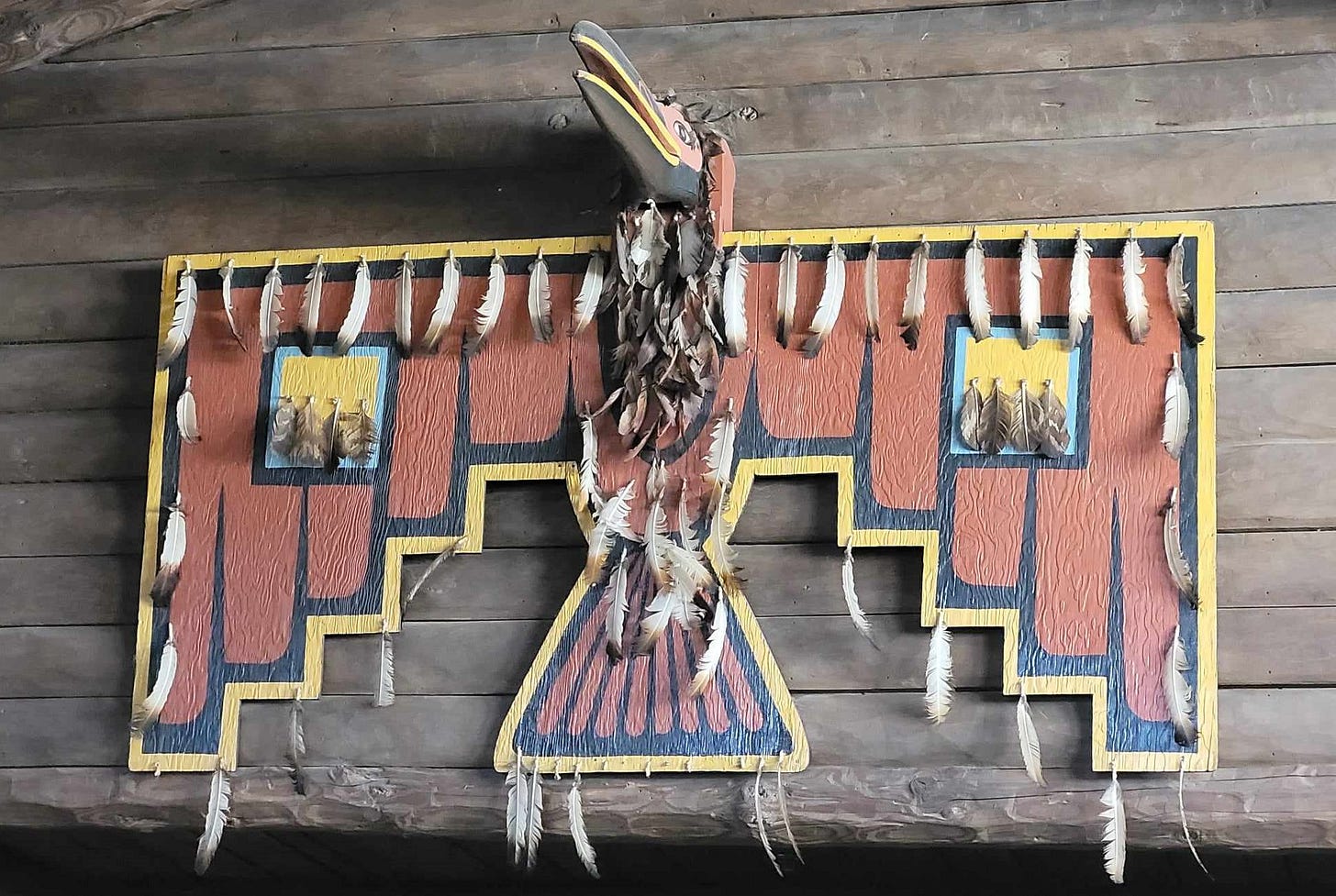
Bright Angel Trail
You can’t talk about “Bright Angel” without thinking about the trail with the same name. Two copper miners, Pete Berry and Ralph Cameron (1863-1953), future US senator of Arizona, built the Bright Angel Trail in 1891 over an old Native American (Havasupai) trail to get to the copper mines in the canyon. Cameron charged a toll of one dollar to both tourists and miners for the use of the trail.
More information about the trail and the current trail closures and conditions can be found here.
First Lodging at the Grand Canyon
Tourism at the Grand Canyon wasn’t a thing until the end of the 1800’s. Visitors would travel to the South Rim by foot, horse, wagon, or stagecoach and camped for the length of their stay. By the early 1890s, tourists had options for a slightly more comfortable visit.
The first hotel, the Grandview Hotel was the first was built between 1892 to 1897 and was located thirteen miles west of the Bright Angel trail head. It was built by former copper miner Pete Berry hoping it would be more lucrative than copper mining.
In 1905, the Santa Fe Railroad built the extravagant El Toval Hotel on the rim very close to its train depot, managed by the Fred Harvey Company. This drew travelers away from the rustic, locally owned establishments. In addition, the stagecoaches that used to take passengers from Flagstaff to the Grandview Hotel couldn’t compete with the railroad, so they discontinued their service. The very dilapidated Grandview Hotel was finally dismantled between 1928-29 and some of its log beams were sold for use in Mary Colter’s Desert View Watchtower.
Original Bright Angel Camp and Hotel
The first accommodation at the spot where the current lodge is located was established by James Thurber in 1896 at the head of the Bright Angel Trail. Bright Angel Camp changed ownership several times. Around the time that the El Tovar was opened, the Santa Fe Railway bought the property that consisted of buildings and tent cabins. The railroad did upgrade the tent cabins, and this Bright Angel Hotel catered to middle class travelers and operated from 1896 through 1935. By the 1930s, the facilities had seen better days and improvements were needed.

Mary Colter Designed the New Bright Angel Lodge
The Santa Fe Railway hired Mary Colter to design a new lodge where the original Bright Angel Camp and Hotel was located. The facilities she designed consisted of a main lodge building with shops and restaurants but also a collection of individual cabins that include two old buildings of historical importance that she saved from destruction.
The first was Red Horse Station that was originally built in the 1890s as a stagecoach stop about 25 miles south of the South Rim. When the railroad was extended north to the Canyon, Ralph Cameron disassembled the building, moved it to the South Rim, and rebuilt it. With a few alterations it became the Cameron Hotel and then served as the first post office at the Grand Canyon from 1910 to 1935. Colter wanted it preserved due to its early “hand squared” log construction.
The second was the cabin where a man named Buckey O’Neill lived. He was an early-day sheriff who became one of Teddy Roosevelt’s Rough Riders in the Spanish-American war. He was killed in action in 1898. The cabin is considered the oldest continuously standing structure on the rim.
Both of these cabins can be rented for your next stay at the Grand Canyon. You cannot book these cabins online like you can the others. You must call their number (888) 29-PARKS. Both are the most expensive cabins at the lodge. I looked into booking them this past November and found that they did have vacancies. They ran about $750 per night before taxes and fees at that time. The O’Neill cabin features a gas fireplace, wet bar, and a clear view of the canyon. If you stay here, keep your screen door locked as tourists think it’s a museum due to the interpretive panel out front and will walk inside.
Bright Angel History Room
One of my favorite places to visit is the History Room in the main lodge building. It’s a museum about the history of the Lodge as well as information and artifacts about Mary Colter and the man who was at the center of it all, Fred Harvey.
The focal point of the room is a large fireplace that Mary Colter designed as part of the lodge to illustrate the natural rock strata of the Grand Canyon. This “Geologic” fireplace has rocks from the very bottom of the canyon as the hearth. Each layer of rock is from the corresponding part of the canyon. The stones at the bottom are geologically older and the ones at the top represent the newer layers near the rim.
With assistance from the park’s Chief Naturalist, Edwin McKee, Colter had all of the stone gathered or cut from the canyon walls and brought up by pack mules for her project.
Booking Your Stay at the Grand Canyon
Xanterra is the current concessionaire for Grand Canyon lodging on the South Rim (most visited). Use this link and don't trust the first few options on a Google search.
As I mentioned previously, if you wish to book the Buckey O’Neill Cabin or the Red Horse Station Cabin you must call Xanterra at (888) 29-PARKS.
Grand Canyon Lodge on the North Rim is run by a different company and can be booked through the Aramark concessionaire site.
Next Time
In my next post, we’ll take a look at another one of Mary Colter’s architectural masterpieces: Phantom Ranch. Phantom Ranch is the only lodging below the rim of the Canyon and is nestled at the bottom. It can only be reached by mule, foot or rafting the Colorado River. Making my way down to the bottom of the Canyon and staying there is on my bucket list.








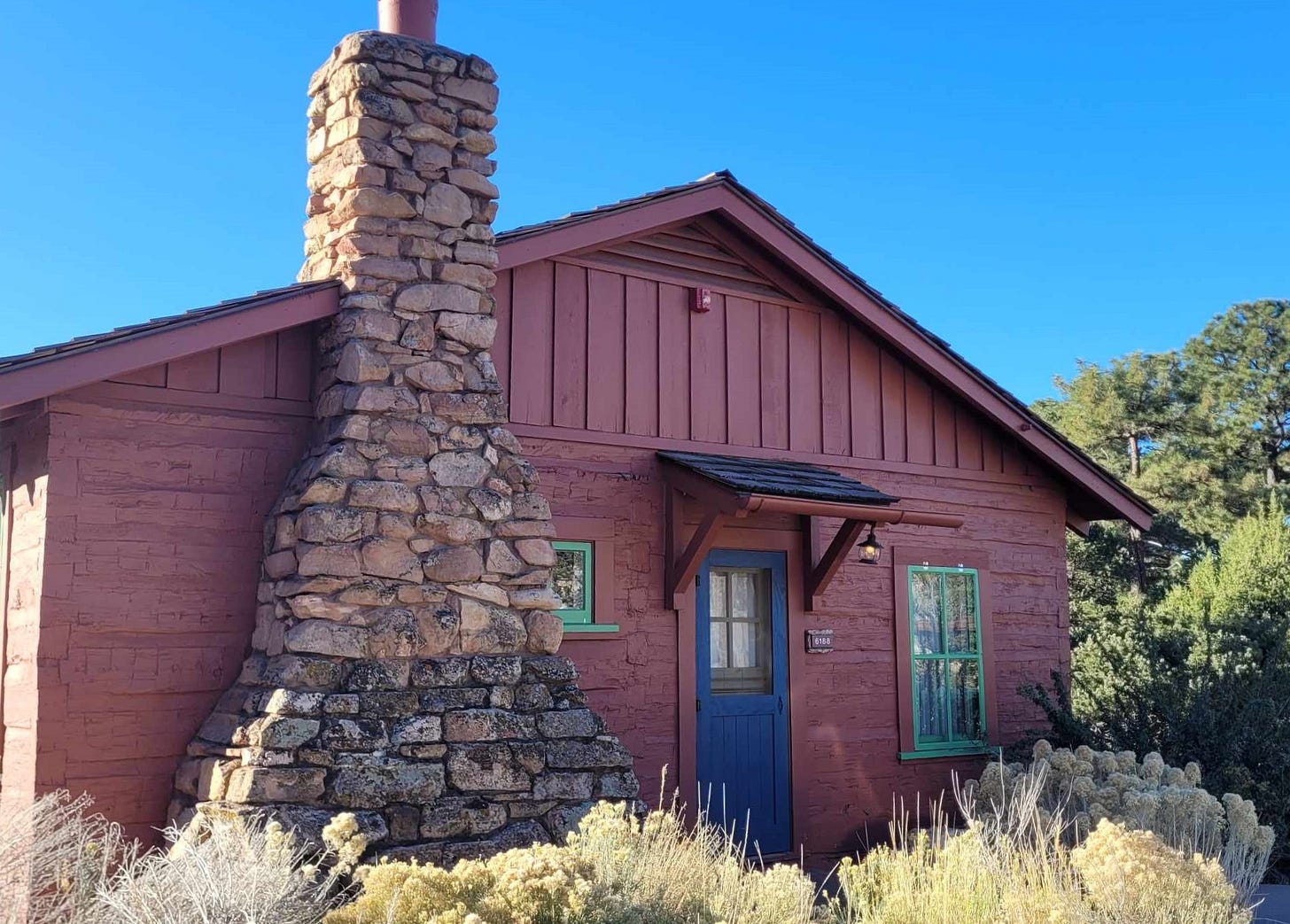
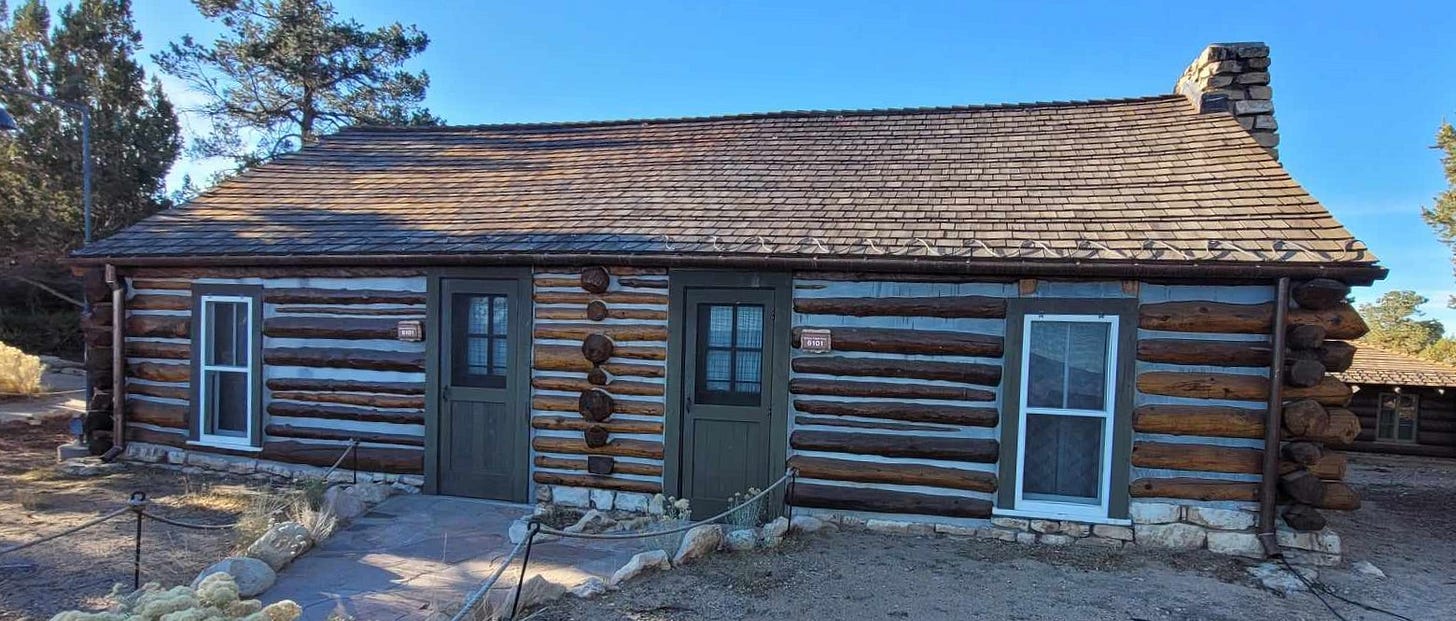
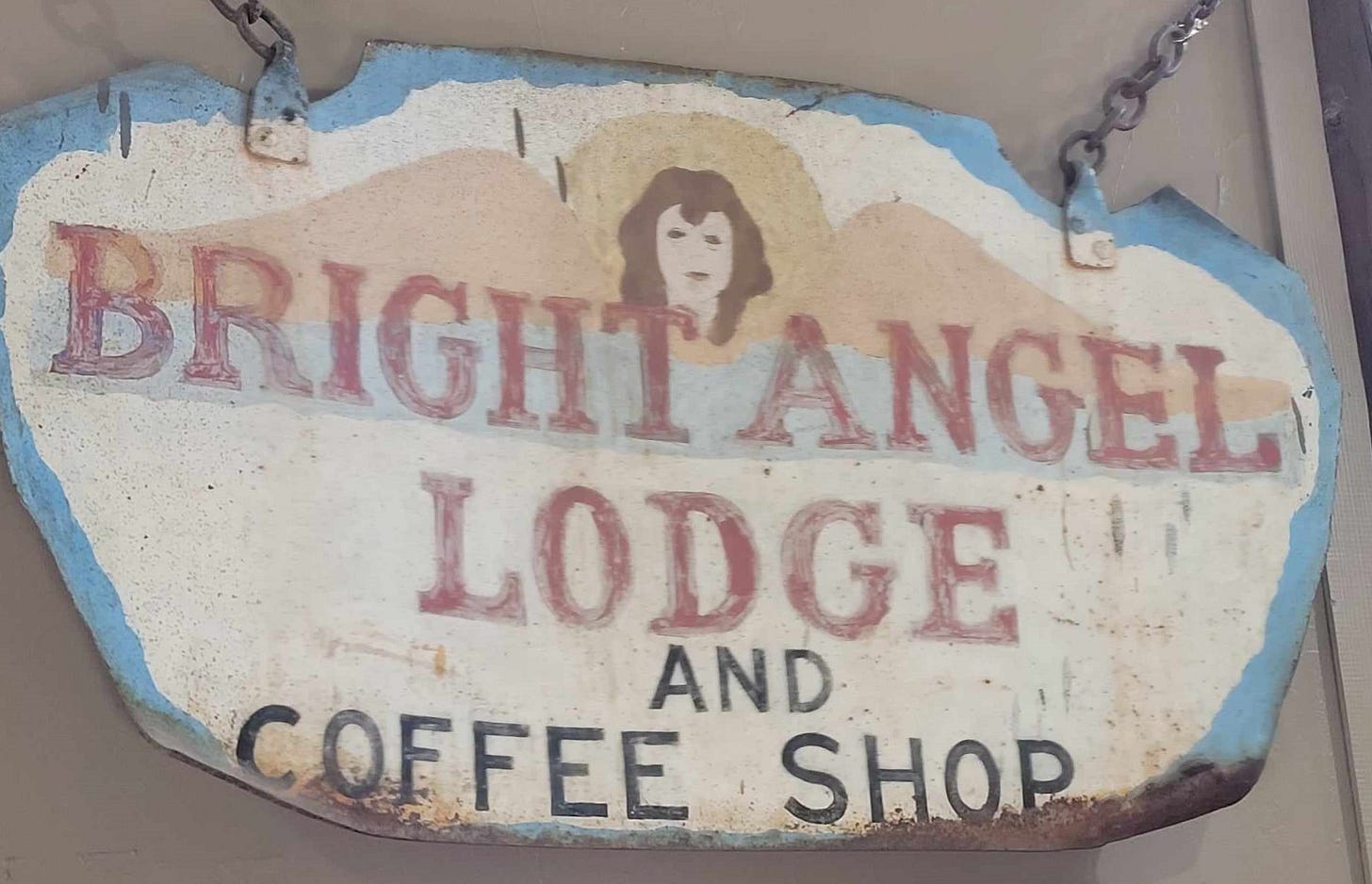
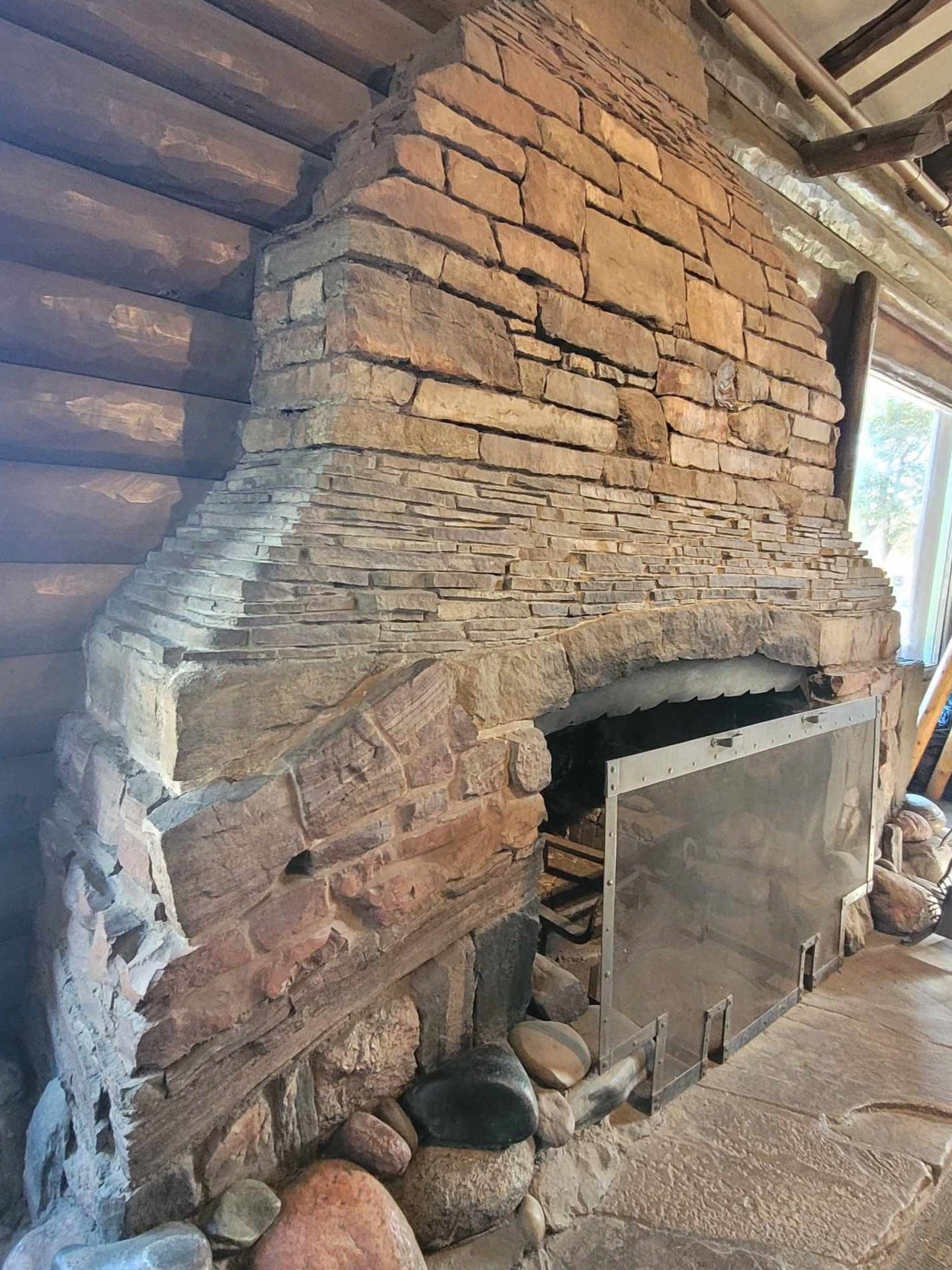

Great article about Bright Angel. Can’t wait for your Phantom Ranch essay. I feel in love with the Grand Canyon the first time I visited it with my family when I was 13 years old - 56 years ago! At the time, I decided that one day I would hike to the bottom of the Canyon. Since then, I have made four trips to the bottom on foot - tent camped three times and stayed at Phantom Ranch one time. If you make the trip to the bottom, you have to try the Phantom Ranch stew - it’s delicious, especially after “falling a mile one step at a time.”
Mary really did it great on the Lodge! You caught it so nice in your pics